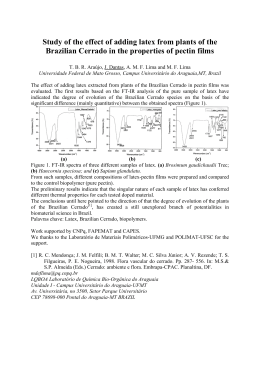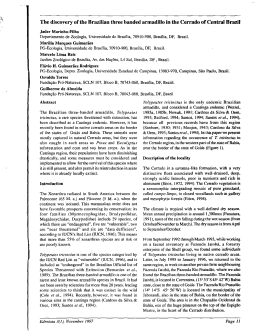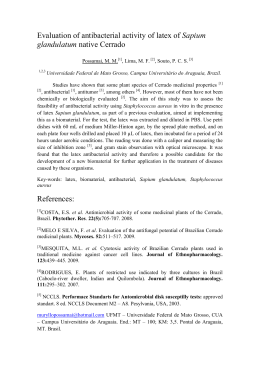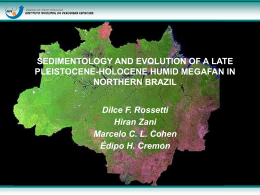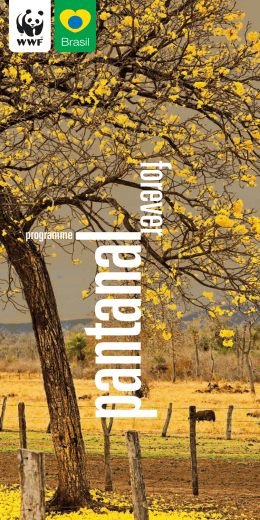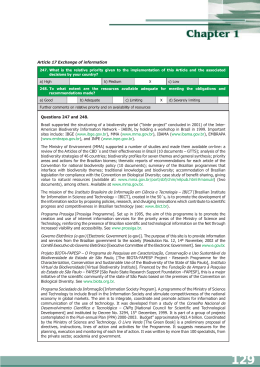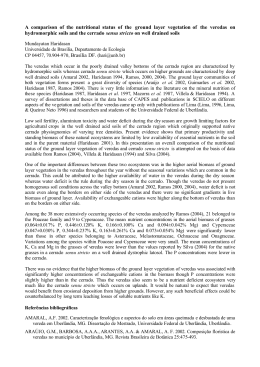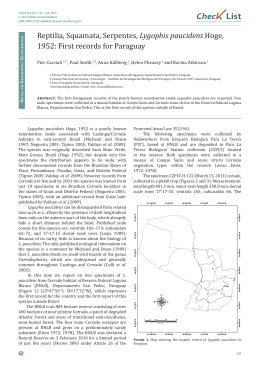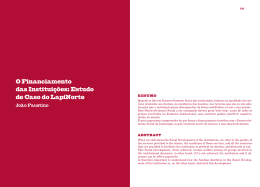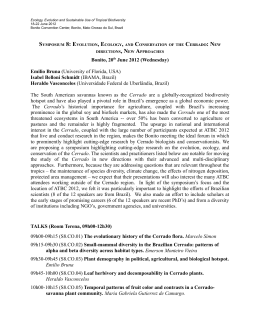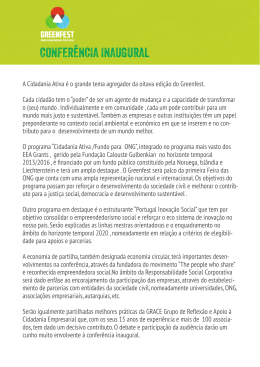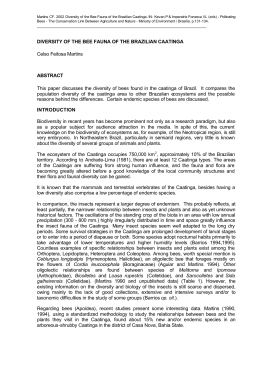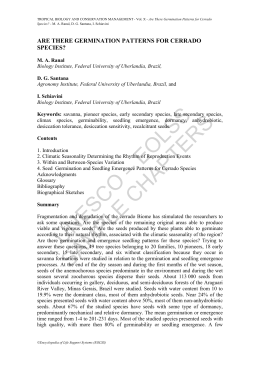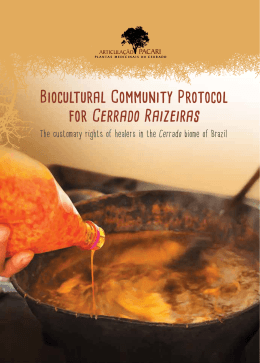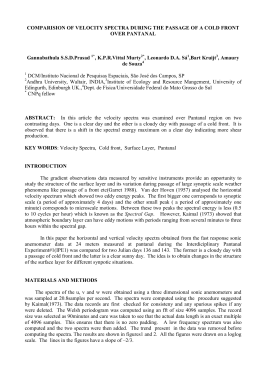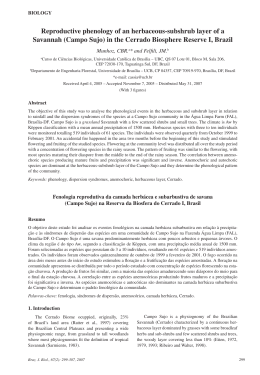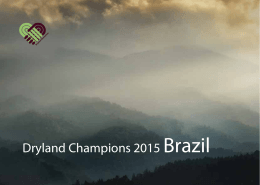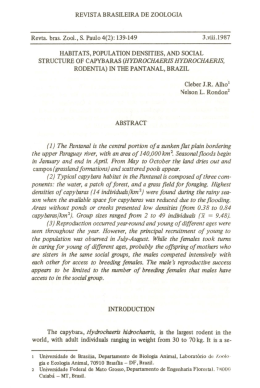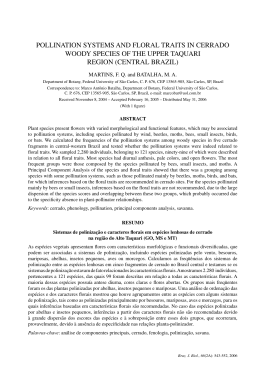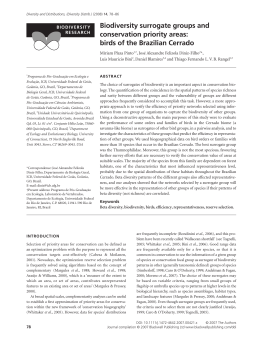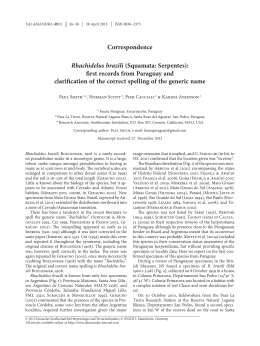Biological diversity of dry and sub-humid lands Decision V/23. Consideration of options for conservation and sustainable use of biological diversity in dryland, Mediterranean, arid, semi-arid, grassland and savannah ecosystems Further comments on implementation of these Decisions and the associated programme of work Question 372. The assessment of the Cerrado and Pantanal biomes in 1999 resulted in the indication of 87 priority areas. A Working Group was established in 2000, which drew up an Agenda Política para Conservação e Uso Sustentável do Cerrado e Pantanal [Policy Agenda for the Conservation and Sustainable Use of the Cerrado and the Pantanal], to be incorporated in the implementation proposed in the Política Nacional da Biodiversidade [National Biodiversity Policy]. Currently in preparation are the action plans of the National Biodiversity Policy. Priority areas for the conservation and sustainable use of the Caatinga have also been recommended. Question 373. Government programmes in subhumid and drought areas (Cerrado, Pantanal, Caatinga and Southern grasslands). Programa Turismo no Coração do Brasil [Tourism in the Heart of Brazil Programme]. Programa Pantanal [Pantanal Programme]. The aim is to promote the conservation and sustainable use of environmental resources in the Pantanal of Mato Grosso, and improve the infrastructure for tourism, by creating highway parks, for example. Support is also being provided for other economic activities such as aquaculture. Principal activities include: enlargement and improvement of the sanitary drainage systems of the upper Paraguay basin; enlargement and improvement of the water supply systems of the upper Paraguay basin; implementation of highways-parks in the upper Paraguay basin; construction of a system for the treatment of solid residues; and monitoring and management of the water resources of the upper Paraguay basin. Programme budget for the period 2000-2003: R$261.5 million. See www.mma.gov.br/port/sqa/ pantanal.html. Programa Desenvolvimento da Região Centro-Oeste [Development programme for the Central-west Region]. This programme promotes strategies for sustainable development, which integrate family production in the regional economy. Principle activities include: financing for tourism development projects, industry, cattleranching, agriculture and agroindustry in the Central-west Region; development of the infrastructure for the Região Integrada de Desenvolvimento do Entorno do Distrito Federal – RIDE [Integrated Development 168 Region Around the Federal District - RIDE] programme; and planning studies and the administration and management of the development of the Central-west region. The main achievement to date is the conception and establishment of the Agência de Desenvolvimento do Centro-Oeste [Central-west Development Agency], within the Plano Estratégico de Desenvolvimento do Centro-Oeste [Strategic Development Plan for the Central-west]. The Secretaria do Desenvolvimento do Centro-Oeste [Secretariat for the Development of the Central-west] of the Ministry of National Integration is responsible for the programme. The budget contemplated in the Pluri-annual Plan (PPA) 2000-2003 is R$1.6 billion. The Programa Desenvolvimento dos Cerrados – PRODECER [Development Program for the Cerrado – PRODECER]. This is one of the oldest government agricultural programmes in areas, begun in the 1970s in a region until then hardly considered for agriculture: the Cerrado of Central Brazil. Incorporated in the Avança Brasil Programme, PRODECER is in its third phase, benefiting the states of Tocantins and Maranhão (previously, it attended to Minas Gerais, Mato Grosso, Mato Grosso do Sul and Bahia). Based on an agreement between Brazil and Japan, the aim of the programme is to stimulate the settlement of farmers, associated with cooperatives and entrepreneurs of the sector, providing technical and financial support. The principal activities are technical assistance for the beneficiaries of PRODECER and financial support for agricultural expansion in the Cerrado. The main achievements to date include: settlement of more than 750 colonists in an area of about 360,000 ha, in the 21 projects of the three Phases of PRODECER (central, south and north regions of the cerrado); generation of an annual production of 570 million tons of grain, worth an estimated US$133 million; annual generation of R$33 million in taxes, and more than 57,000 jobs; investments in the order of US$55 million; increase in soybean exports by the Companhia Vale do Rio Doce in São Luis (growth of 25% per year); and the transformation of small towns and even villages in major regional poles regions. The Ministry of Agriculture and Supply – DFPV is responsible for the Program. The budget contemplated in the Pluri-annual Plan (PPA) 2000-2003 is R$47.9 million. Programa Nacional de Florestas – PNF [National Program for Forests – PNF] – Caatinga. More than 10 areas in the Caatinga were given priority for funding (approximately US$60 million) by the Brazilian government in an investment project, under negotiation by the PNF with the Global Environment Facility. The areas are spread throughout the Brazilian semi-arid region, which includes the north of the state of Minas Gerais and the nine north-eastern Brazilian states. The project proposal “Sustainable Use of Forest Resources and Biodiversity Conservation in the Caatinga Ecoregion” is based o the 82 priority areas selected in the Caatinga biome assessment workshop held in 2001. Question 374. The Centro Nacional de Pesquisas para a Conservação de Aves Silvestres – CEMAVE [National Research Centre for Bird Conservation] of the Instituto Brasileiro do Meio Ambiente e dos Recursos Naturais Renováveis – IBAMA [Brazilian Institute for the Environment and Renewable Natural Resources] has collaborative agreements for migrant bird studies with Argentina and Uruguay. A project, coordinated by the Esquel Foundation, is studying desertification indicators (www.esquel.org.br). The Fundo Nacional do Meio Ambiente - FNMA [National Environment Fund – FNMA] launched a public notice in 2001 requesting proposals for projects on desertification (www.mma.gov.br). The Instituto Sociedade, População e Natureza – ISPN [Institute for Society, Population and Nature – ISPN] runs a Support Program for Small Projects in the Cerrado (www.ispn.org.br), while the Fundo Nacional do Meio Ambiente - FNMA [National Environment Fund – FNMA] is managing, through a coordinating institution, a support program for small projects in the Caatinga. Projeto de Conservação e Utilização Sustentável de Diversidade Biológica Brasileira – PROBIO [Project for the Conservation and Sustainable Use of Brazilian Biological Diversity –PROBIO] Public notices. Projects considered by PROBIO in the priority areas of the Brazilian biomes are divided into two groups: those in open ecosystems (Caatinga, Cerrado, and Southern grasslands), and those in forest ecosystems (Amazon and the Atlantic Forest). Open ecosystems were given preference, to avoid direct competition with projects submitted for closed ecosystems, which traditionally have been of higher quality. 169 Decision V/20. Operations of the Convention Please use this box to identify what specific activities your country has carried out as a DIRECT RESULT of becoming a Contracting Party to the Convention, referring back to previous questions as appropriate: Question 376. Brazil participated in all the regional preparatory meetings of the Conference of the Parties, organized by the CBD Secretariat, and also in the regional meetings of the CHM, of the Inter-American Biodiversity Information Network (IABIN), and of the World Conservation (IUCN) on National Strategies and Action Plans for the CBD. Question 377. Yes, as part of the process to draw up the Política Nacional da Biodiversidade [National Biodiversity Policy]; the biome assessments; the Agendas Positivas para Amazônia e Cerrado e Pantanal [Positive Agendas for Amazon, the Cerrado and Pantanal]; the Sustainable Development Policies for Amazon and the Atlantic Forest; and the National Agenda 21 and Agenda 21 for Amazon. Syntheses were also prepared on traditional knowledge and biodiversity and the status of knowledge on biodiversity (freshwater, marine invertebrates, terrestrial invertebrates, vertebrates, terrestrial plants, genetic biodiversity and microbial diversity) and the efficacy of Brazilian environmental legislation in terms of the CBD. Please use this box to identify joint initiatives with other Parties, referring back to previous questions as appropriate: Please use this box to provide any further comments on matters related to national implementation of the Convention: The wording of these questions is based on the Articles of the Convention and the decisions of the Conference of the Parties. Please provide information on any difficulties that you have encountered in interpreting the wording of these questions 170 If your country has completed its national biodiversity strategy and action plan (NBSAP), please give the following information: 171
Download
